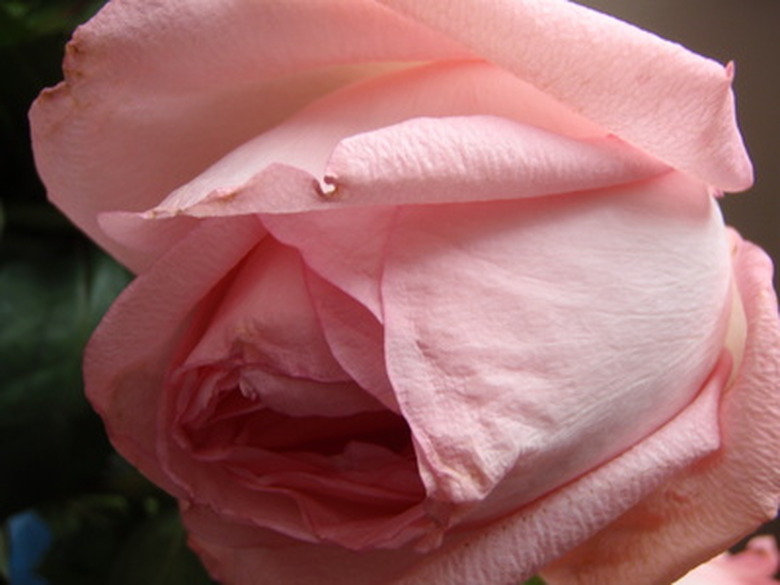My Roses Are Wilting
If you notice wilting of your rose plants, particularly the petals, leaves and canes, your roses are likely suffering from an underlying disease or pest infestation. The best way to avoid wilt and subsequent problems is by maintaining consistent care for healthy plants that are more likely to avoid and recover from problems than weakened roses. Grow roses in full sunlight and loose, well-drained soil for best development.
Aphids
Aphids are pests that seek out rose plants as hosts. The damage they create results in wilt, stunted growth, curled leaves and flowering problems. Rose aphids, in particular, target roses and display pink or green bodies and black legs. Rose aphids feed on foliage, stems and buds by sucking plant tissue fluid. As aphids feed, they excrete honeydew, a sticky sugary substance that falls onto plant parts. In addition to the mess it creates, honeydew promotes the growth of sooty mold, a black-hued fungal development that can cover plant parts, blocking out necessary sunlight. Wilting and other symptoms often accompany diminished health. Gardeners control this problem by releasing natural enemies that hunt and kill aphids. Purchase damsel bugs, ladybugs or parasitic wasps from garden supply stores. For more intensive control, effective chemical management includes the application of horticultural oil, according to the Virginia Cooperative Extension.
- If you notice wilting of your rose plants, particularly the petals, leaves and canes, your roses are likely suffering from an underlying disease or pest infestation.
- In addition to the mess it creates, honeydew promotes the growth of sooty mold, a black-hued fungal development that can cover plant parts, blocking out necessary sunlight.
Water Problems
Roses that do not receive enough water often wilt, develop stunted leaves, have flowering problems and lose their leaves. Roses need consistent irrigation throughout the growing season for healthy growth. Gardeners should apply 1 inch of water on a weekly basis. This rate is variable depending upon the dryness of soil, which begs for more moisture and temperatures, which result in greater irrigation need as weather heats up, according to the University of Illinois Extension. Growers can add a 2 to 3 inch layer of mulch, like wood chips, to the soil surrounding roses to increase moisture retention. A small area surrounding the rose stems must remain clear, as problems may develop if mulch is placed directly against roses.
Verticillium Wilt Disease
Verticillium wilt of roses is a fungal disease that results in the wilting of canes as well as yellowing of leaves nearest the ground. Wilt is often irreversible when left untreated and this disease can lead to leaf drop or plant death. To avoid dealing with this potentially severe problem in the home garden, growers should begin by purchasing disease-free rootstock. Gardeners may also remove and destroy affected plant parts while collecting and destroying fallen plant debris, as these materials help to further spread disease pathogens.
- Roses that do not receive enough water often wilt, develop stunted leaves, have flowering problems and lose their leaves.
- A small area surrounding the rose stems must remain clear, as problems may develop if mulch is placed directly against roses.
Stem Canker Disease
Stem canker disease is a fungal infection that affects roses, resulting in the development of cankers or lesions of dying tissue, as the name implies. As the cane suffers and dies due to canker formation, leaves wilt. Home gardeners should look for oval cankers displaying a brown hue that create depressions within plant tissue. Though there is no chemical control for this particular problem, gardeners can prevent this disease by keeping their roses free of stress, a factor that dramatically increases the likelihood of infection, according to the University of Illinois Extension. Gardeners can also remove infected plant material by pruning behind cankers into healthy plant tissue to reduce further spread.
